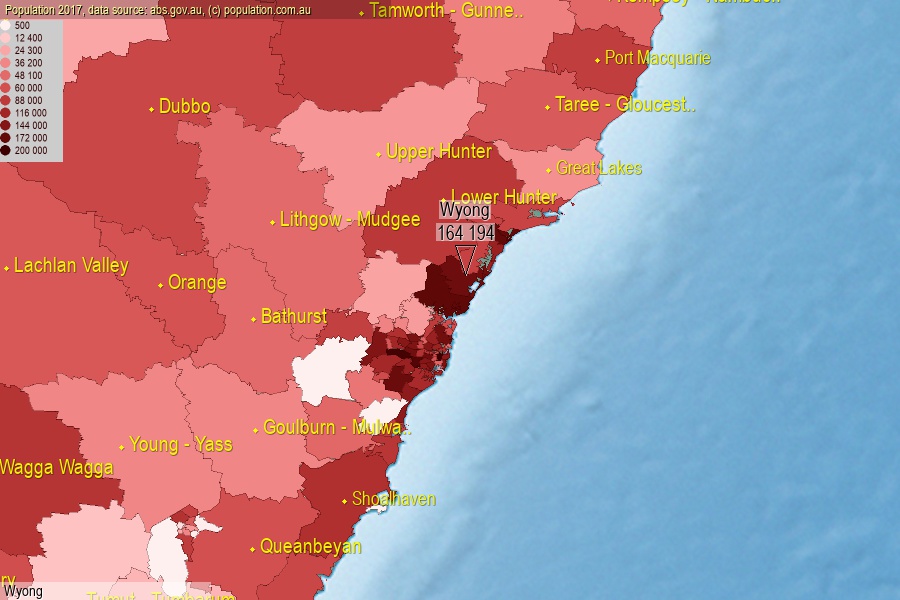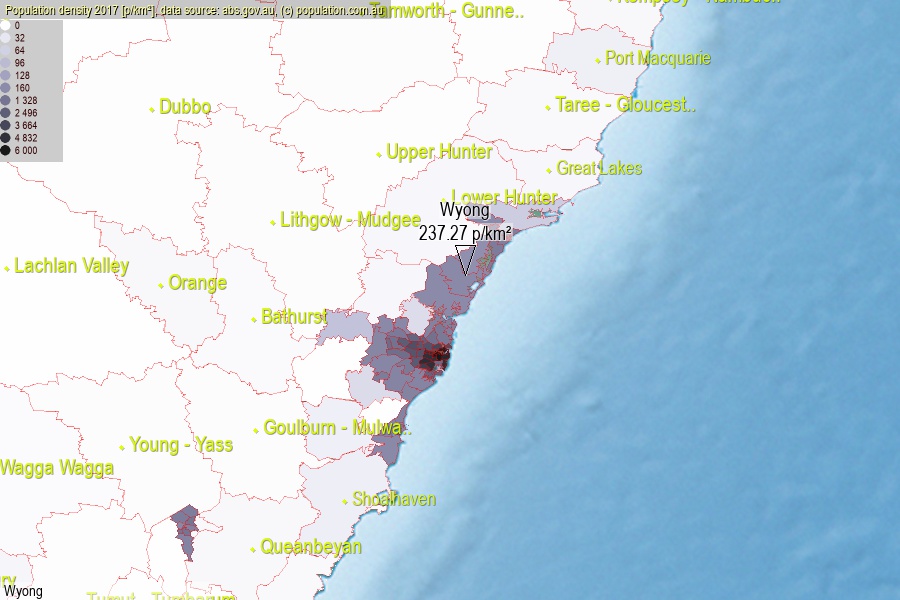 population.com.au
population.com.auLast official estimated population of Wyong (as Statistical Area Level 3) was 164 194 people (on 2017-06-30)[2]. This was 0.66% of total Australian population and 2.064% of NSW population. Area of Wyong is 692.00 km², in this year population density was 237.27 p/km² . If population growth rate would be same as in period 2016-2017 (+1.06%/yr), Wyong population in 2025 would be 178 626. [0]



Click to enlarge. Wyong is located in the center of the images.
Population [people], population density [p./km²] and population change [%/year] [2]
View borders » (new window) [4]
[1991-1992] +3.39 %/Y
[1992-1993] +2.55 %/Y
[1993-1994] +2.47 %/Y
[1994-1995] +2.14 %/Y
[1995-1996] +2.85 %/Y
[1996-1997] +2.37 %/Y
[1997-1998] +2.25 %/Y
[1998-1999] +2.43 %/Y
[1999-2000] +2.54 %/Y
[2000-2001] +2.56 %/Y
[2001-2002] +1.60 %/Y
[2002-2003] +1.26 %/Y
[2003-2004] +0.66 %/Y
[2004-2005] +0.84 %/Y
[2005-2006] +0.88 %/Y
[2006-2007] +1.67 %/Y
[2007-2008] +2.55 %/Y
[2008-2009] +1.72 %/Y
[2009-2010] +1.53 %/Y
[2010-2011] +1.07 %/Y
[2011-2012] +1.07 %/Y
[2012-2013] +1.08 %/Y
[2013-2014] +1.10 %/Y
[2014-2015] +1.13 %/Y
[2015-2016] +1.24 %/Y
[2016-2017] +1.06 %/Y
[0] Calculated with linear interpolation from officially estimated population
[1] Read more about SA3 and Australian Statistical Geography Standard (ASGS) on abs.gov.au
[2] Population data from Australian Bureau of Statistics (Population and density: 2017; change: 2016-2017)
[3] Digital Boundaries: Australian Statistical Geography Standard (ASGS) 2016.
[4] Border coordinates are simplifyed using Ramer-Douglas-Peucker algorithm.